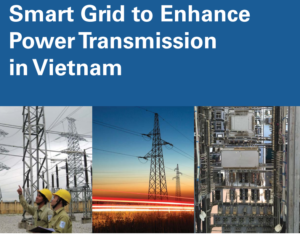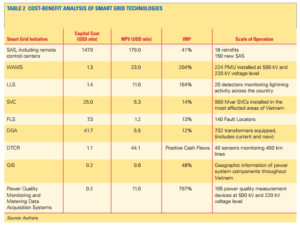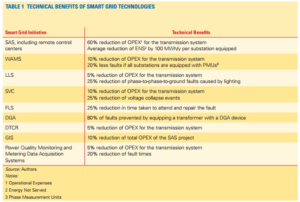
The World Bank has closely engaged with National Power Transmission Corporation (NPT), the Electricity Regulatory Authority of Vietnam (ERAV) and the National Load Dispatch Center (NLDC) to refine the existing Smart Grid roadmap on the basis of the lessons learned from the international experience with Smart Grid development. This report presents the results of this technical assistance engagement funded by the Energy Sector Management Assistance Program (ESMAP) and the Asia Sustainable and Alternative Energy Program (ASTAE) and consists of: (i) a technical analysis of Vietnam’s existing Smart Grid roadmap, and alternative and future options (Volume 1); (ii) cost-benefit and risk analyses of the Smart Grid options identified in the technical analysis (Volume 2); and (iii) considerations of regulatory and performance monitoring (Volume 3).
The report proposes a revised Smart Grid roadmap containing the following components: (i) Substation Automation System; (ii) Wide Area Monitoring Systems; (iii) Lighting Location System LLS; (iv) Static Var Compensator; (v) Fault Locator System; (vi) On-line Dissolved Gas-in-oil Analysis; (vii) Dynamic Thermal Circuit Rating; (viii) Geographic Information Systems; and (ix) Power quality monitoring and Metering Data Acquisition Systems.
 In addition to Smart Grid technologies, High Voltage Direct Current (HVDC) technology is also considered in the analysis. The construction of a new HVDC line is not a Smart Grid initiative itself, but the choice of the HVDC technology for building over planned conventional AC lines introduces certain desirable characteristics in the grid to render it more secure. The design of the grid therefore is smart and the incremental benefits associated with the HVDC line over the planned AC line have been considered in the analysis. In particular, the adoption of HVDC can contribute to reduce the transmission system OPEX by 5%.
In addition to Smart Grid technologies, High Voltage Direct Current (HVDC) technology is also considered in the analysis. The construction of a new HVDC line is not a Smart Grid initiative itself, but the choice of the HVDC technology for building over planned conventional AC lines introduces certain desirable characteristics in the grid to render it more secure. The design of the grid therefore is smart and the incremental benefits associated with the HVDC line over the planned AC line have been considered in the analysis. In particular, the adoption of HVDC can contribute to reduce the transmission system OPEX by 5%.
The cost-benefit analysis performed shows that all identified Smart Grid solutions have positive Net Present Values (NPVs).
